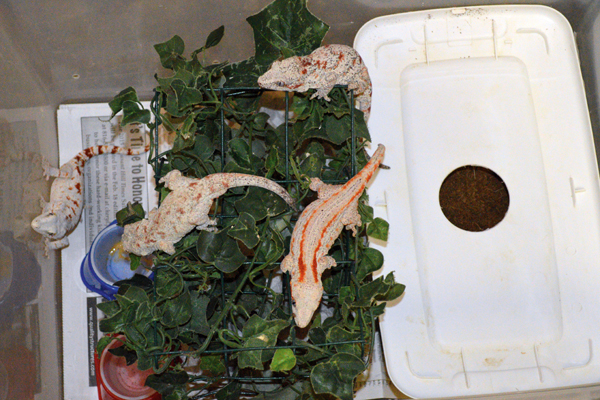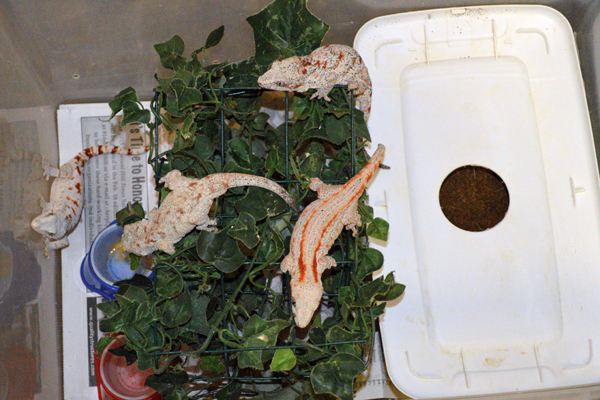Gargoyle Gecko is the arboreal species inhabitant to New Caledonia, a chain of islands of Australia. These species are famous for bumps on their skulls. As of today, Gargoyles are extensively available across the globe. Most of the activity of geckos is done at night because these are nocturnal. The geckos have patches of red and orange color on their body and have a light to the dark gray color body.
Being omnivorous, Gargoyle geckos consume nectars, young small mammals, fruits, and invertebrates. They have a lifespan of 15-20 years if kept with proper care. Geckos become mature when they get 15-18 months old and normally weigh between 45-65gms. These geckos are around 20-25.4 cm inches tall when measured from head to tail, but their weight and measurement depends mainly on genetics and gender.
The main characteristic of Gargoyle geckos is the ability to change their color, which is called as “firing up/down.” All the Gargoyle Geckos differ in their patterns and colors and have a variety of shades like red, orange, gray, brown, and white. If you are planning to have a Gargoyle gecko, then you must know about their size, diet, housing, sex, and breeding.
What to provide these Gargoyle geckos in diet?

Gargoyle geckos can be fed both insects and fruit because they are omnivorous. Repashy fruit mixes present an excellent staple that can also be stored in the form of powder. This powder can be feed in a plastic cup by mixing with water. Gargoyle geckos only accept suitably size feeder insects like wax worms, butter worms, dubia roaches, crickets, and black soldier fly larvae.
The feeder insects must be cleaned with either a mineral supplement or a vitamin and must be provided to geckos in flee proof bowl. Some Gargoyle Geckos don’t accept live feeders unless and until they aren’t mixed with fruit mixes.
Sex

As compared to Crested Geckos, it is difficult to sexing Gargoyle Geckos because of the bulges at the bottom of the tale of both males and females. Male bulges are larger and have femoral pores between hind legs on scales, which make sex difficult.
Breeding

These geckos start to breed from December to August. In the time period of these months, the female geckos lay 2 eggs in every 30-45 days. Usually, the eggs are buried in a lay box or at the bottom of some enclosed space. If you have a female gecko that has lay eggs, then it is advised to take away the male geckos so that females can recover themselves after breeding.
Housing

If you are planning to keep Gargoyle Gecko adult, then you may require a 10-gallon tank, and if planning to keep a pair, then you need a 20-gallon tank. It is not recommended to house young and unsexed gargoyle geckos collectively. The male geckos and female geckos have an aggressive nature, and both are aggressive towards the same gender; therefore, keeping a pair of male-female together is recommended.
Gargoyles are passionate climbers, and they always want some height in the area or environment in which they live. They make the ultimate use of hanging plants, branches, and standing cork bark. It is imperative to take care of housing temperature as they must be kept in 74-78F. The body of Gargoyle Geckos doesn’t need any heating or special lighting, but a low watt basking spot and low-level Ultraviolet bulb are always appreciated.
These geckos must stay hydrated, and to stay hydrated, humidity is required as it will help in shedding their skin. You must provide a bowl of clean water to make gecko hydrated and can check the level of humidity with a hygrometer or a digital thermometer.
The Final Word
So, if you are in love with nocturnal, arboreal species like Gargoyle Geckos, then you can plan to keep them. You must learn about each and every necessity or detail of these geckos from the above-mentioned points. The Gargoyle Geckos are mostly fed fruit mix for three to four times in a week to help them grow accurately. Get to know about the breeding, temperature, housing, sex, and diet of Gargoyle Geckos that are mentioned above.